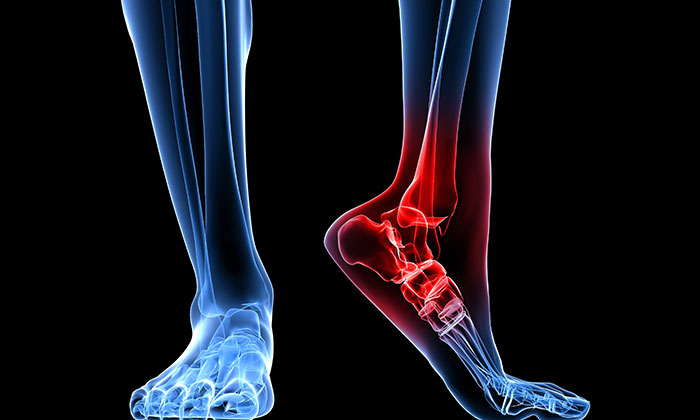Plantar fasciitis is one of the most common causes of heel pain. It involves inflammation of a thick band of tissue that runs across the bottom of the foot and connects heel bone to toes. Plantar fasciitis commonly causes stabbing pain that usually occurs with your first steps in the morning. As you get up and move more, the pain normally decreases, but it might return after long periods of standing or after rising from sitting. Plantar fasciitis is more common in runners, people who are overweight and those who wear shoes with inadequate support.
Though plantar fasciitis can arise without an obvious cause, factors that can increase your risk of developing plantar fasciitis include:
Age, common between the ages of 40 and 60.
Certain types of exercise, such as long-distance running, ballistic jumping activities, ballet dancing and aerobics
Foot mechanics, being flat-footed, having a high arch or even having an abnormal pattern of walking
Occupations that keep you on your feet, such as Factory workers, teachers and others
Obesity
Ignoring plantar fasciitis may result in chronic heel pain that hinders your regular activities. Changing the way you walk to minimize plantar fasciitis pain might lead to foot, knee, hip or back problems. Most people who have plantar fasciitis recover with conservative treatments, including resting, icing the painful area and stretching, but it takes several months.
Depending on the severity of the pain, your doctor may start with over-the-counter Non-steroidal anti-inflammatory drugs (NSAIDs) like Ibuprofen or Naproxen or Acetaminophen. However, these medicines can have side effects.
Stretching and strengthening exercises or use of specialized devices may provide some relief; these include Physical therapy, Night splints and Orthotics. When more-conservative measures aren’t working after several months, your doctor might recommend Steroid Injections, Extracorporeal Shock Wave Therapy, Tenex procedure or Surgery. Progression of the treatment depends on your individual symptoms and pain level.
Injecting a type of steroid medication into the tender area can provide temporary pain relief. Multiple injections aren’t recommended because they can weaken your plantar fascia and possibly cause it to rupture. Sound waves are directed to the area of heel pain to stimulate healing in Extracorporeal Shock Wave Therapy; this procedure might cause bruising, swelling, pain, numbness or tingling.
Plantar fasciitis is an increasingly common condition. An understanding of the anatomy and physiology of the foot and lower leg is very important in rendering appropriate care. Deep Tissue Sports massage can help as part of treatment for plantar fasciitis by stretching the plantar fascia. Plantar fasciitis, also known as Plantar Heel Pain Syndrome (PHPS), is a common pathology characterized by pain on the sole of the foot.
Often, the pain is worse in the morning and when coming up on the toes of the affected foot. Both the plantar fascia and plantar flexor muscles are often tender to palpation and may contain myofascial trigger points. Unfortunately, there is limited evidence for what clinical treatment is effective for PHPS. More and more, massage therapy and stretching are seen as first-line interventions, in contrast to steroid injections or possible surgery.
Since shortening of the plantar flexor muscles could increase stress on the plantar fascia, it seems reasonable that massage to these muscles would relieve foot pain in patients with PHPS.
Massaging the bottom of your feet and manually stretching your plantar fascia ligament will help relieve your pain.
Deep massage of the posterior calf combined with stretching may improve the function of patients with plantar fasciitis more than a combination of ultrasound and stretching. Ten minutes of deep pressure massage to the posterior calf easily fits into most therapeutic massage sessions.

